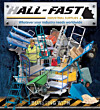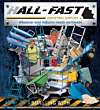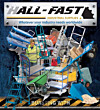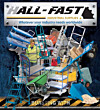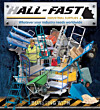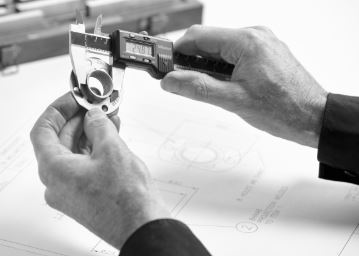
The architectural landscape has undergone a dramatic transformation in recent decades, with building designs becoming increasingly sophisticated and performance requirements reaching new levels of complexity. Modern architectural cladding systems must not only provide aesthetic appeal but also deliver exceptional performance in terms of weather resistance, thermal efficiency, structural integrity, and long-term durability. At the heart of these high-performance cladding systems lies the critical importance of reliable, advanced fastening solutions that can meet the demanding requirements of contemporary architecture.
Bonding fasteners for architectural cladding represent a revolutionary advancement in building construction technology, offering architects, engineers, and contractors access to fastening solutions that combine superior mechanical performance with enhanced aesthetic possibilities. These innovative fastening systems enable the creation of architectural features that were previously impossible or impractical with traditional fastening methods, while providing the reliability and durability required for modern building performance standards.
The Evolution of Architectural Cladding Systems
Contemporary architectural cladding systems have evolved far beyond simple weather protection to become sophisticated building envelope components that integrate multiple performance requirements into unified systems. Modern cladding must address thermal performance, moisture management, air barrier continuity, structural load transfer, seismic accommodation, and aesthetic requirements while maintaining these performance characteristics throughout the building's operational life.
Performance Requirements for Modern Cladding
The performance requirements for architectural cladding systems have become increasingly stringent as building codes evolve and energy efficiency standards become more demanding. Cladding systems must now provide continuous thermal barriers, manage moisture transport, resist wind loads that can exceed 200 mph in hurricane-prone regions, and accommodate structural movement from thermal expansion, seismic activity, and building settlement.
These requirements create complex engineering challenges that traditional fastening methods often cannot address adequately. The point loading characteristics of conventional fasteners can create thermal bridges that compromise energy performance, while their limited load distribution capabilities may result in stress concentrations that can lead to premature failure or damage to cladding materials.
Aesthetic Considerations and Design Freedom
Modern architectural design increasingly emphasizes clean lines, uninterrupted surfaces, and seamless integration of different materials and systems. These aesthetic goals often conflict with the visual intrusion of traditional fasteners, creating a need for fastening solutions that can provide secure attachment while remaining virtually invisible.
Bonding fasteners offer architects unprecedented design freedom by enabling the creation of continuous surfaces without visible fastener heads, allowing for the seamless integration of different materials, and facilitating the execution of complex geometries that would be difficult or impossible with conventional fastening methods.
Understanding Bonding Fastener Technology
Bonding fasteners represent a sophisticated fusion of mechanical fastening and structural adhesive bonding technologies, creating fastening systems that offer performance characteristics superior to either approach used independently. This hybrid technology addresses the complex requirements of modern architectural cladding while providing additional benefits in terms of installation efficiency, weather sealing, and long-term durability.
Mechanical-Adhesive Integration
The fundamental principle underlying bonding fastener technology involves the integration of mechanical fastening with structural adhesive bonding to create joints that distribute loads over larger areas than traditional point-loaded fasteners. This load distribution reduces stress concentrations in both the fastener and the cladding material, improving fatigue resistance and long-term durability.
The mechanical component provides immediate holding power during installation and serves as a backup retention method, ensuring that the connection remains secure even if the adhesive bond should ever be compromised. This redundancy is particularly important in architectural applications where failure could result in safety hazards or significant property damage.
Adhesive Bonding Principles
The adhesive component of bonding fasteners creates molecular-level connections between the fastener, the cladding material, and the substrate. This bonding process can accommodate a wide range of materials including metals, composites, ceramics, and advanced polymers, providing architects with the flexibility to specify innovative cladding materials without compromising fastening performance.
The adhesive bond also provides excellent sealing characteristics, effectively preventing water infiltration and air leakage that could compromise building performance or lead to moisture-related problems. This sealing capability is particularly valuable in architectural applications where maintaining weather-tight integrity is essential for both performance and durability.
Hall-Fast's Comprehensive Cladding Solutions
Hall-Fast's extensive range of bigHead bonding fasteners provides architects, engineers, and contractors with access to advanced fastening solutions specifically designed for demanding architectural cladding applications. With nearly two decades of industry experience since the company's establishment in August 2006, Hall-Fast has developed deep expertise in the unique requirements of architectural fastening systems.
The company's commitment to continuous innovation has resulted in an ever-expanding product range, with approximately 200,000 standard items from leading brands available through their comprehensive website. This extensive selection ensures that construction professionals can source all their fastening requirements from a single, reliable supplier while having access to the latest technological developments in fastening systems.
Specialized Architectural Fastening Products
bigHead Female Hex Nuts (https://www.hall-fast.com/fasteners-small-components/bighead-bonding-fasteners/bighead-female-hex-nuts) provide excellent solutions for architectural cladding applications where accessibility and load distribution are critical considerations. Their design offers superior load distribution compared to traditional nuts while maintaining the strength characteristics required for structural applications.
bigHead Female Threaded Collars (https://www.hall-fast.com/fasteners-small-components/bighead-bonding-fasteners/bighead-female-threaded-collars) excel in applications requiring robust threaded connections with enhanced pull-out resistance. These fasteners are particularly valuable for cladding systems that must accommodate thermal movement or require periodic maintenance access.
bigHead Hook Loop Nuts and Washers (https://www.hall-fast.com/fasteners-small-components/bighead-bonding-fasteners/bighead-hook-loop-nuts-washers) offer innovative solutions for complex architectural geometries and challenging installation conditions often encountered in modern cladding systems.
bigHead Male Plain Studs (https://www.hall-fast.com/fasteners-small-components/bighead-bonding-fasteners/bighead-male-plain-studs) provide versatile connection points that can accommodate various cladding attachment configurations while maintaining the clean aesthetic lines demanded by contemporary architectural design.
bigHead Male Threaded Studs (https://www.hall-fast.com/fasteners-small-components/bighead-bonding-fasteners/bighead-male-threaded-studs) combine the benefits of bonding fastener technology with the convenience of threaded connections, ideal for applications requiring adjustable connections or easy assembly and disassembly procedures.
Metal Cladding Systems
Metal cladding systems represent one of the most popular and versatile categories of architectural cladding, offering durability, design flexibility, and excellent performance characteristics. However, metal cladding also presents unique challenges related to thermal expansion, corrosion resistance, and electrical conductivity that require specialized fastening solutions.
Aluminum Cladding Applications
Aluminum cladding systems are widely used in commercial and institutional construction due to their excellent corrosion resistance, lightweight characteristics, and ability to be formed into complex shapes. However, aluminum's high coefficient of thermal expansion creates significant movement that must be accommodated by the fastening system.
Bonding fasteners provide excellent solutions for aluminum cladding applications by distributing thermal stresses over larger areas and accommodating controlled movement without compromising the integrity of the connection. The adhesive component of bonding fasteners also provides galvanic isolation when aluminum cladding is used with steel structural systems, preventing corrosion problems that can occur with direct metal-to-metal contact.
Steel and Stainless Steel Cladding
Steel and stainless steel cladding systems offer exceptional strength and durability characteristics, making them popular choices for high-performance architectural applications. These materials require fastening solutions that can accommodate their strength characteristics while providing the corrosion resistance needed for long-term durability.
Bonding fasteners designed for steel cladding applications must provide excellent corrosion resistance while maintaining the strength characteristics needed to resist wind loads and other environmental forces. The selection of appropriate materials and protective coatings is critical for ensuring long-term performance in these demanding applications.
Copper and Bronze Cladding
Copper and bronze cladding systems offer unique aesthetic characteristics and excellent corrosion resistance, making them popular choices for prestige architectural applications. However, these materials require specialized fastening solutions that can accommodate their unique properties while preventing galvanic corrosion problems.
Bonding fasteners for copper and bronze applications must be carefully selected to ensure material compatibility and prevent electrochemical reactions that could compromise the appearance or performance of the cladding system. The fastening system must also accommodate the natural weathering characteristics of these materials while maintaining structural integrity.
Composite and Advanced Material Cladding
The increasing use of composite materials and advanced polymers in architectural cladding has created new challenges and opportunities for fastening system design. These materials often offer superior performance characteristics compared to traditional materials but require specialized fastening approaches to achieve optimal results.
Fiber-Reinforced Composite Cladding
Fiber-reinforced composite materials offer exceptional strength-to-weight ratios and excellent corrosion resistance, making them attractive for demanding architectural applications. However, these materials require fastening solutions that can accommodate their unique mechanical properties and prevent damage to the fiber matrix.
Bonding fasteners provide excellent solutions for composite cladding applications by distributing loads over larger areas and reducing stress concentrations that could cause fiber damage or delamination. The adhesive component can also provide excellent compatibility with composite materials, creating strong, durable connections that maintain their properties throughout the cladding system's operational life.
High-Performance Polymer Cladding
Advanced polymer cladding materials offer unique combinations of properties including excellent chemical resistance, UV stability, and design flexibility. These materials often require specialized fastening approaches that can accommodate their unique thermal and mechanical characteristics.
Bonding fasteners designed for polymer cladding applications must provide excellent compatibility with the base material while accommodating the thermal expansion characteristics typical of polymer materials. The fastening system must also maintain its properties throughout the temperature range and environmental conditions expected in the application.
Ceramic and Stone Cladding Systems
Ceramic and stone cladding systems present unique challenges related to their brittle nature, weight characteristics, and susceptibility to stress concentrations. Traditional fastening methods often create point loads that can result in cracking or failure of these materials, making bonding fasteners particularly valuable for these applications.
Ceramic Panel Systems
Modern ceramic panel systems offer exceptional durability and aesthetic possibilities, but their installation requires fastening solutions that can accommodate their brittle nature and provide uniform load distribution. Bonding fasteners excel in these applications by eliminating stress concentrations and providing distributed loading that reduces the risk of ceramic failure.
The weather sealing characteristics of bonding fasteners also provide advantages in ceramic cladding applications by preventing water infiltration that could cause freeze-thaw damage or other moisture-related problems.
Natural Stone Cladding
Natural stone cladding systems require fastening solutions that can accommodate the unique characteristics of each stone type while providing the security and durability required for architectural applications. Different stone types have varying strength characteristics, thermal expansion rates, and susceptibility to weathering that must be considered in fastening system design.
Bonding fasteners provide excellent solutions for natural stone applications by distributing loads uniformly and accommodating the natural variations in stone properties. The adhesive component can also provide excellent compatibility with stone materials while preventing water infiltration that could cause weathering damage.
Installation Considerations and Best Practices
The successful installation of bonding fasteners in architectural cladding applications requires careful attention to surface preparation, environmental conditions, and quality control procedures. The complexity of modern cladding systems demands installation practices that ensure optimal performance throughout the building's operational life.
Surface Preparation Requirements
Achieving reliable bonding in architectural applications requires meticulous surface preparation to ensure optimal adhesion between the fastener, adhesive, and substrate materials. The surface preparation process must remove all contaminants that could interfere with bonding while creating surface conditions that promote optimal adhesive performance.
The specific surface preparation requirements vary depending on the substrate materials, environmental conditions, and the adhesive system being used. Some applications may require specialized cleaning procedures, mechanical abrasion, or chemical treatments to achieve optimal bonding conditions.
Environmental Considerations
Weather conditions during installation can significantly impact the performance of bonding fasteners in architectural applications. Temperature, humidity, wind, and precipitation must all be considered when planning installation activities, as these conditions can affect both the installation process and the long-term performance of the fastening system.
Installation procedures must also account for the time required for adhesive curing before the cladding system can be subjected to full design loads. This curing time varies with environmental conditions and the specific adhesive system being used, requiring careful coordination with construction schedules.
Quality Assurance and Testing
Comprehensive quality assurance procedures are essential for ensuring the long-term performance of architectural cladding systems. These procedures should include verification of proper surface preparation, adhesive application, fastener placement, and curing conditions, as well as testing to verify that the installed fastening system meets design requirements.
Regular inspection and testing protocols help identify potential issues before they can compromise system performance or safety. These protocols should be tailored to the specific installation conditions and performance requirements of each project.
Load Analysis and Structural Design
Architectural cladding systems must be designed to resist various load combinations including dead loads from the cladding materials, live loads from maintenance activities, wind loads, seismic loads, and thermal loads from temperature variations. The fastening system plays a critical role in transferring these loads safely to the building structure.
Wind Load Considerations
Wind loads often represent the governing design condition for architectural cladding systems, particularly in high-rise buildings or exposed locations. These loads can create both positive and negative pressures on the cladding surface, resulting in complex load patterns that must be accommodated by the fastening system.
Bonding fasteners provide superior resistance to wind loading through their enhanced load distribution characteristics and ability to resist both tension and shear forces simultaneously. The adhesive component also provides damping characteristics that can reduce the transmission of dynamic wind loads to the building structure.
Seismic Design Requirements
Seismic design requirements add complexity to cladding fastening systems, particularly in regions with high seismic activity. The fastening system must maintain its integrity during seismic events while allowing for the relative movement between the cladding and the building structure.
Bonding fasteners' ability to accommodate controlled movement while maintaining structural connection makes them well-suited for seismic applications. The enhanced damping characteristics provided by the adhesive component can also help reduce the transmission of seismic forces through the cladding system.
Thermal Load Management
Thermal loads from temperature variations can create significant stresses in cladding systems, particularly in systems with large temperature differentials or materials with different thermal expansion characteristics. The fastening system must accommodate these thermal movements without compromising the integrity of the connection or the cladding material.
Bonding fasteners provide excellent solutions for thermal load management by distributing thermal stresses over larger areas and accommodating controlled movement without creating stress concentrations. The adhesive component can also provide thermal isolation that helps reduce thermal bridging through the fastening system.
Corrosion Resistance and Material Selection
The long-term performance of architectural cladding systems depends critically on the corrosion resistance of all system components, including fasteners. Architectural environments often involve exposure to moisture, temperature extremes, atmospheric pollution, and other conditions that can accelerate corrosion and material degradation.
Stainless Steel Solutions
Stainless steel represents the preferred material choice for many architectural fastening applications due to its excellent corrosion resistance and strength characteristics. Different grades of stainless steel offer varying levels of corrosion resistance, with marine-grade alloys providing superior performance in coastal environments or other aggressive conditions.
The selection of appropriate stainless steel grades must consider the specific environmental conditions, compatibility with other system materials, and the expected service life of the installation. Hall-Fast's technical experts can provide guidance on material selection for specific applications and environmental conditions.
Protective Coatings and Finishes
Advanced protective coatings and finishes can enhance the corrosion resistance and aesthetic characteristics of architectural fasteners beyond what is achievable with base materials alone. These coatings must be carefully selected to maintain their protective and aesthetic characteristics throughout the expected service life while remaining compatible with bonding adhesives and other system components.
The selection of appropriate coatings must also consider the specific environmental conditions and aesthetic requirements of the application. Some coatings may provide excellent corrosion resistance but may not be suitable for visible applications due to aesthetic considerations.
Thermal Performance and Energy Efficiency
Modern building codes increasingly emphasize energy efficiency and thermal performance, creating requirements for continuous thermal barriers and minimized thermal bridging. The fastening system can significantly impact the thermal performance of cladding systems, making the selection of appropriate fastening solutions critical for achieving energy efficiency goals.
Thermal Bridging Considerations
Traditional fastening methods often create thermal bridges that allow heat transfer through the building envelope, compromising energy efficiency and potentially creating condensation problems. Bonding fasteners can significantly reduce thermal bridging by minimizing the amount of conductive material penetrating the thermal barrier.
The adhesive component of bonding fasteners can also provide thermal isolation that further reduces heat transfer through the fastening system. This thermal isolation capability is particularly valuable in high-performance building applications where minimizing thermal bridging is critical for achieving energy efficiency goals.
Continuous Insulation Systems
Continuous insulation systems that provide uninterrupted thermal barriers require fastening solutions that can maintain thermal performance while providing secure attachment. Bonding fasteners offer excellent solutions for these applications by providing secure attachment with minimal thermal bridging.
The design of continuous insulation systems must carefully coordinate the fastening system with the thermal barriers to ensure that thermal performance is maintained while providing the structural performance required for the cladding system.
Maintenance and Serviceability
Architectural cladding systems are typically designed for service lives of 30 years or more, making long-term maintenance and serviceability critical considerations in fastening system selection. The fastening system must maintain its performance throughout this extended period while allowing for necessary maintenance activities.
Access Requirements
Cladding systems often require periodic maintenance activities including cleaning, inspection, and component replacement. The fastening system must accommodate these activities while maintaining system integrity and worker safety. Some applications may require removable fastening solutions that allow for access to concealed components or systems.
Bonding fasteners can provide solutions for both permanent and removable connections, allowing designers to optimize the fastening system for the specific maintenance requirements of each application.
Long-Term Durability
The long-term durability of architectural cladding systems depends on the ability of all components, including fasteners, to maintain their performance characteristics throughout the building's operational life. This requires careful selection of materials, protective coatings, and installation procedures that ensure optimal long-term performance.
Regular inspection and maintenance procedures can help identify potential issues before they compromise system performance or safety. These procedures should be tailored to the specific requirements of each cladding system and environmental conditions.
International Excellence and Recognition
Hall-Fast's commitment to excellence in architectural fastening solutions has earned recognition through numerous industry awards for international trade and business achievement (https://www.hall-fast.com/awards). This recognition reflects the company's dedication to providing superior products and technical support to construction professionals worldwide.
The company's global reach extends far beyond the UK market, with successful operations serving customers across multiple continents. This international presence ensures that architects, engineers, and contractors worldwide have access to Hall-Fast's extensive product range and technical expertise, regardless of their location or project requirements.
As a proud family business, Hall-Fast has consistently demonstrated its commitment to giving back to the community (https://www.hall-fast.com/community) while maintaining its focus on innovation and customer service. This combination of technical excellence and social responsibility has established Hall-Fast as a trusted partner in the construction industry.
Future Trends and Technological Developments
The architectural industry continues to evolve rapidly, with new materials, design approaches, and performance requirements constantly under development. Bonding fasteners will play an increasingly important role in these advancements, providing the flexibility and performance characteristics required for next-generation architectural cladding systems.
Smart Building Integration
The integration of smart building technologies into cladding systems requires fastening solutions that can accommodate sensors, monitoring systems, and other electronic components. Bonding fasteners provide excellent solutions for these applications by providing secure attachment with minimal visual impact.
Sustainable Design Requirements
Increasing emphasis on sustainable design and environmental performance is driving the development of new cladding materials and systems that require innovative fastening approaches. Bonding fasteners offer advantages in sustainable design applications through their ability to accommodate recycled materials and facilitate disassembly for end-of-life recycling.
Advanced Materials Integration
The continued development of advanced materials including bio-based composites, smart materials, and nano-enhanced materials will require fastening solutions that can accommodate their unique properties while maintaining optimal performance characteristics.
Conclusion
Bonding fasteners for architectural cladding represent a critical technology enabling the continued advancement of building design and performance. Their unique combination of mechanical strength, thermal performance, weather resistance, and aesthetic flexibility makes them indispensable for modern architectural cladding systems.
Hall-Fast's comprehensive range of bigHead bonding fasteners, supported by nearly two decades of industry experience and continuous innovation, provides construction professionals with access to the advanced fastening solutions needed for successful architectural projects. The company's commitment to quality, technical support, and global accessibility ensures that professionals have the resources needed to deliver reliable, high-performance cladding systems.
As the construction industry continues to evolve toward higher performance standards and more sophisticated design requirements, bonding fasteners will remain at the forefront of enabling technologies, providing the reliable connections that make modern architectural achievements possible.
The complete range of fasteners and small components available from Hall-Fast (https://www.hall-fast.com/fasteners-small-components) ensures that construction professionals have access to comprehensive solutions for all their cladding and assembly requirements. For more information about Hall-Fast's architectural fastening solutions and technical support services, visit https://www.hall-fast.com/about or contact the technical team at https://www.hall-fast.com/contact.
Whatever your industry needs worldwide, Hall-Fast delivers the architectural fastening solutions you need for successful building projects.



